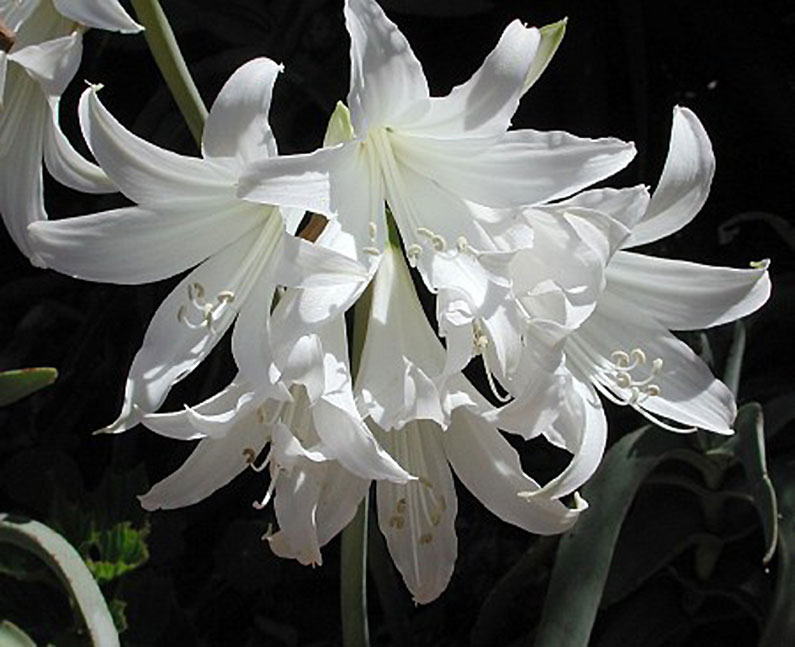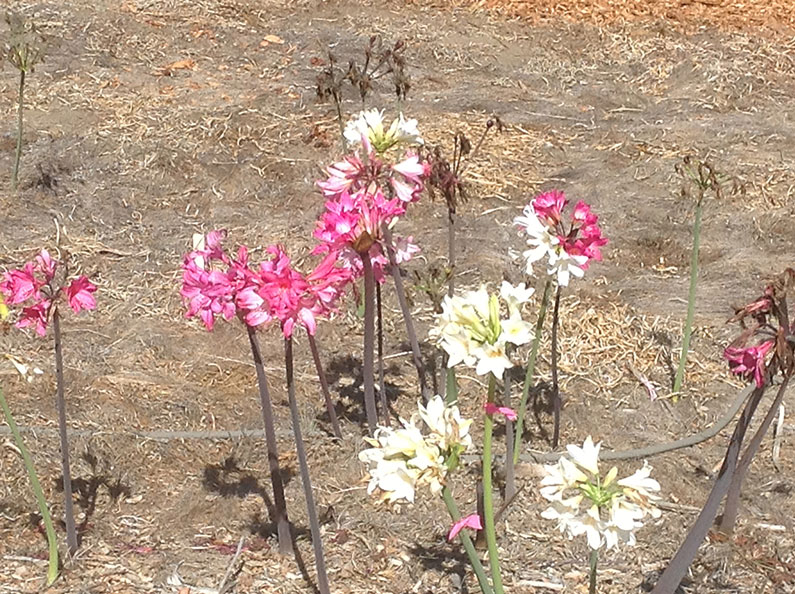White Amaryllis Belladonna is a beautiful addition to the growing list of warm climate bulbs! This is a large bulb and produces large, lily or trumpet shaped flowers around a central nexus,
They grow best in Zones 6-9 and each bulb sends up a stem from bare ground, thus the name Naked Lady.
The species of pink amaryllis belladonna was introduced into cultivation at the beginning of the eighteenth century. They reproduce slowly by either bulb division or seeds and have gradually naturalized throughout the lower elevations and coastal areas in much of the United State’s west coast as these environments are similar to their original habitat in South Africa
Hybrid Amaryllis belladonna was bred in the 1800s in Australia. They continue to be grown and further hybridized until now we can find color variations of peach, white, cream, magenta and reds.
Culture: Plant about 1″ below the surface. As they grow and divide, from the dry ground in late summer, each bulb produces one or two leafless stems 15-30″ tall, each of which bears a cluster of 2 to 12 funnel-shaped flowers. They need no summer water but will take it if offered. You may find a rogue bloom elsewhere in your garden or along the road as birds will spread the seeds.
Below are White Amaryllis Belladonna growing with other colors in the hybridizers field. Some have finished blooming but the whites are still in bloom. These will die back after bloom and the field will be bare – until spring when each bulb will send up fleshy leaves alone. As the summer begins these leaves will die back until. once again, the field will be bare of signs except for the dried brownish leaves. Then the cycle will repeat itself and the stems will shoot up again and open with the blooms once again as Naked Ladies!



0 Comments